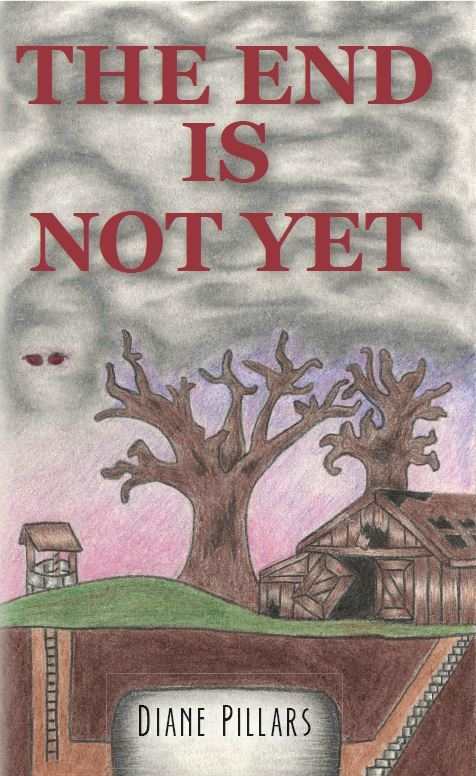The End Is Not Yet
End-of-the-world scenario highlights the foibles of humanity and the judgment of those on high.
When the end of days arrives, will you be prepared? In Diane Pillars’s debut novel, those guided by a true faith lead by example as those in power seek to destroy all that is good in a river of blood. The End Is Not Yet is a rambling and fantastical look at the end of the world as we know it through the eyes of dedicated survivalists in America who hold faith and resist to the bitter end.
After the president of the United States makes a public announcement commanding all citizens to submit to the army, surrender any valuables, and allow their pets to be used for food, Brad and Debbie Porter collect their guns and move to their secret underground bunker. With the other members of their extended family, they search the countryside for caches of food and weapons, and take in others they find running from the authorities. From stories told by the survivors, they soon learn that the army is rounding up people in gruesome camps at the order of the president.
As their resistance movement grows, the group learns that the whole world is suffering from the same abuse of power and widespread slaughter of those not in the elite. Crops begin to fail, widespread drought kills millions, and a plague of locusts and scorpions spreads globally. Against that backdrop, the evil World Council condemns to death anyone who refuses to worship their fake religion. Can those with faith in the true God persist through this catastrophe and live to see salvation?
The story is full of tension as characters succumb to dramatic violence and learn about the horrors of the larger world. However, scenarios that would otherwise require detailed explanation and maneuvering are brushed off with implausible solutions. For example, someone in the Porters’ bunker is suspected of stealing food, but instead of examining the dynamics of an isolated group of people, the character is quietly killed off with no further reflection from the survivors. Other quick fixes use religion as a way to unilaterally decide the value of one’s character. For example, throughout the story, soldiers are depicted as the embodiment of evil, but when two are captured and profess to worship the Christian God, they are welcomed with open arms and virtually no suspicion.
While the motivations of the central characters are straightforward, the author chooses to tell about their personalities instead of allowing them to grow as the book progresses. The result is a set of flat characters that lack the richness of a typical protagonist, and antagonists that seem set only on the pursuit of evil. Together with the antigovernment rhetoric and subtle xenophobia, this constructed dualism causes the novel to feel more like a fictionalized mouthpiece for extreme ideologies than a story for its own sake. With no explanation of why the president has turned on his people or the motivations of those behind the atrocities, it is difficult to empathize with the characters or be immersed in the story’s world.
Although the story steps away from most attempts at realism or plausibility, it holds a comic-book appeal that will interest readers looking for a light read about the foibles of humanity and the judgment of those on high.
Reviewed by
Eric Anderson
Disclosure: This article is not an endorsement, but a review. The publisher of this book provided free copies of the book and paid a small fee to have their book reviewed by a professional reviewer. Foreword Reviews and Clarion Reviews make no guarantee that the publisher will receive a positive review. Foreword Magazine, Inc. is disclosing this in accordance with the Federal Trade Commission’s 16 CFR, Part 255.

